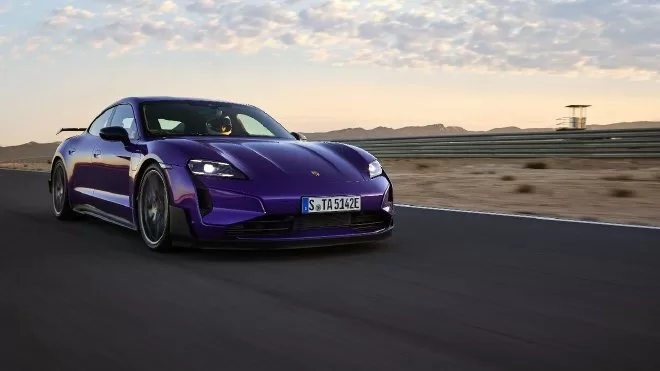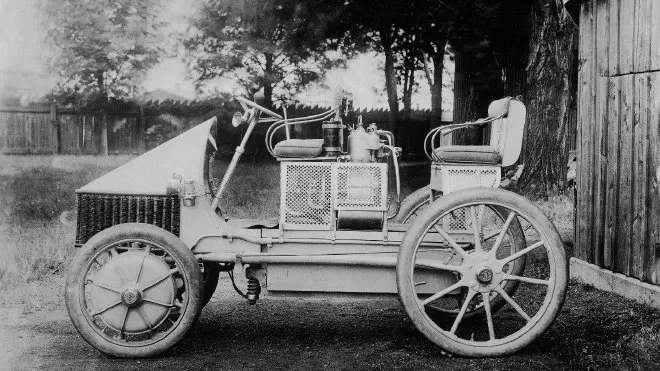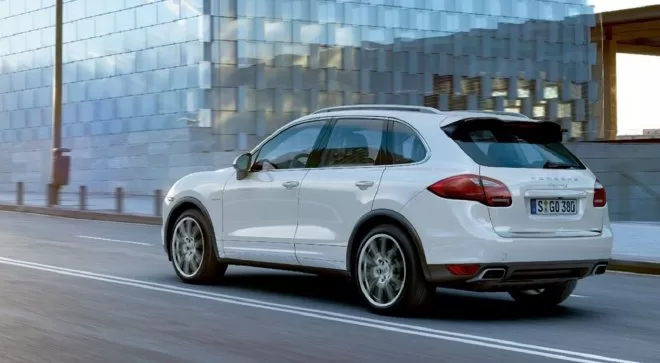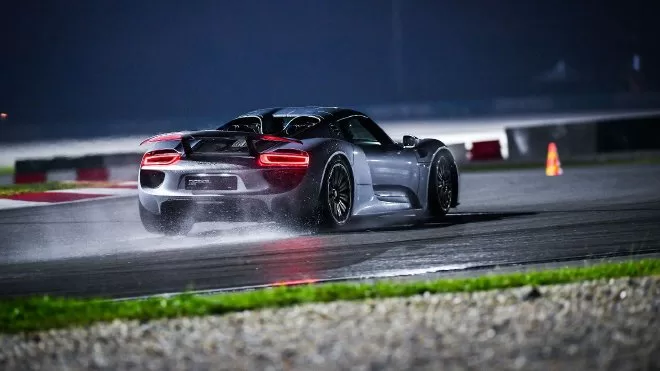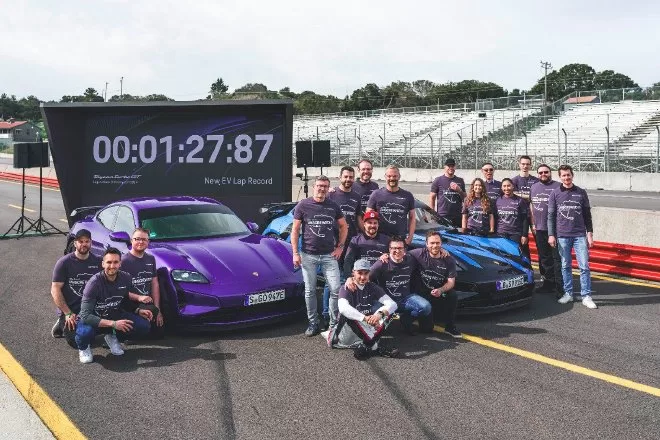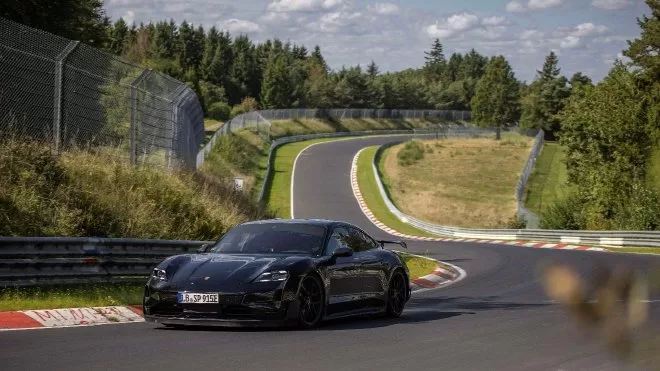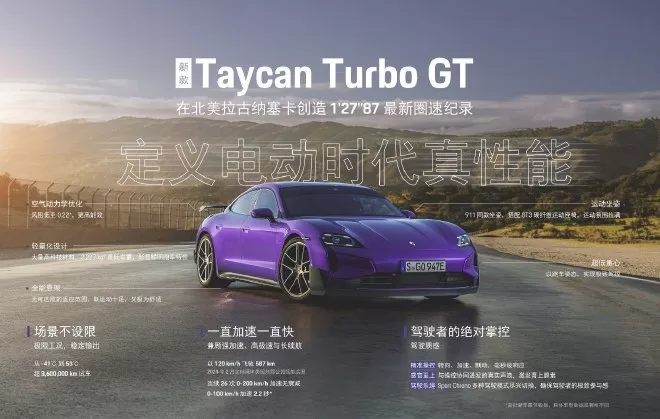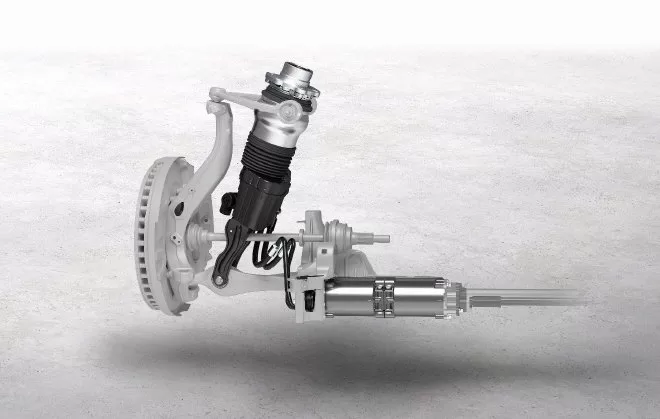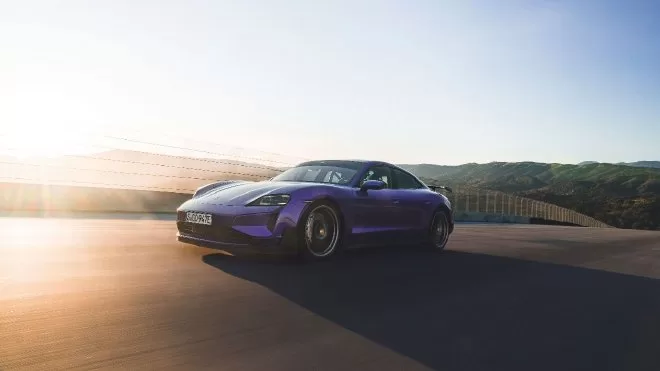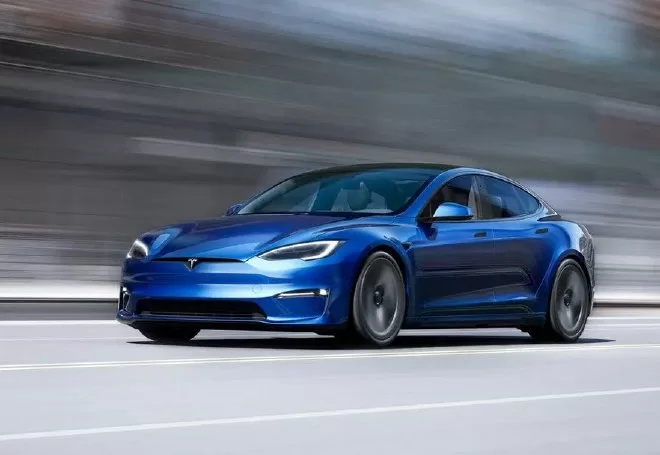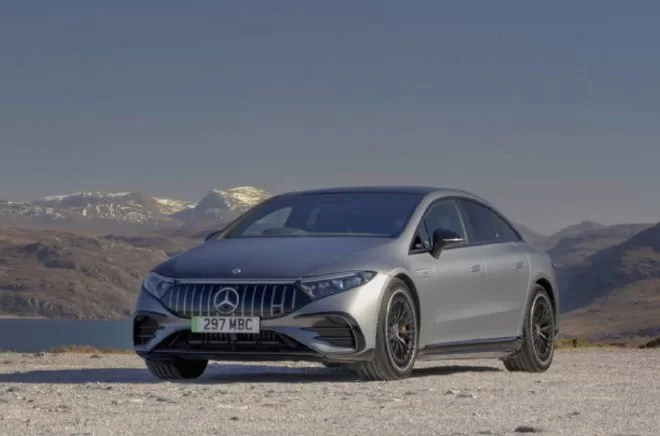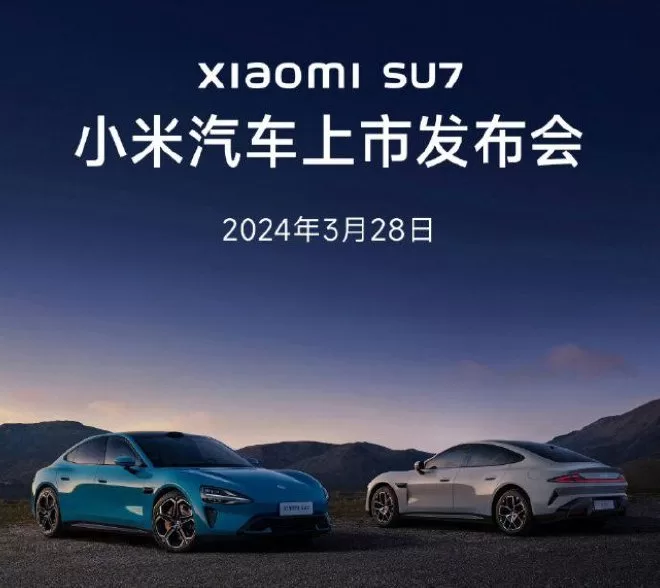On March 11, the new Taycan from Porsche made its global debut. The car’s explosive performance once again redefines our imagination of a pure electric vehicle’s performance. With a fastest 2.2-second 0-60 acceleration and impressive power and handling, the new Taycan has also set multiple lap records. In the era of electric cars, achieving an exaggerated 0-60 acceleration may not be difficult, but breaking lap records is not as simple as just being fast. Especially on the racetrack, having only acceleration and horsepower is not enough. Braking, aerodynamics, suspension stability, overall tuning, and cornering stability all need to achieve a better balance. Electric and performance are not contradictory, but should complement each other. How does Porsche define performance in the electric era? Perhaps the new Taycan is the best interpretation. Next, let’s review Porsche’s journey of electric performance and discuss the new Taycan’s track attributes and technical features. 124 years ago, Porsche’s first electric car
Porsche has always been at the forefront of electrification and mass production of cars in the luxury car segment. In 1900, the first Lohner-Porsche electric car made its debut at the Paris World Expo. The vehicle could reach a top speed of 37 km/h with two 2.5 PS motors. In the same year, Porsche designed the world’s first functional hybrid car, Semper Vivus. The technology, known as the “Lohner-Porsche” system, was also applied outside the electric car field. Porsche expanded the car’s range by using an internal combustion engine to drive a generator that provided power to the wheel motors, rather than using batteries as an energy source. A year later, a mass-produced version was born, named the Lohner-Porsche “Mixte”.
However, the Lona-Porsche also showed why electric cars have not been successful in the past few decades: despite its low output power, the car weighs 2 tons. The lack of infrastructure and limited range have long restricted electric travel. The addition of electric performance has given racing more possibilities.
As lithium-ion battery technology for cars continues to develop and regulations on pollutants and CO2 emissions become stricter, attention has once again turned to electric power systems. In 2010, Porsche introduced the Cayenne S Hybrid, paving the way for the company’s electric vehicles. In 2011, the Panamera S Hybrid became the first parallel full hybrid model in the luxury car sector, and is Porsche’s most economical model to date, with a fuel consumption of 6.8 liters per 100 kilometers according to NEDC standards, while still delivering 380 PS of power.
In 2010, Porsche introduced the 911 GT3 R Hybrid as the first partially electric race car at the Nürburgring Nordschleife. The car is powered by a 353 kW 4.0-liter flat-six engine and two electric motors on the front axle, each producing 60 kW. Porsche also opted for permanent magnet synchronous motors. During braking, the two motors act as generators, recharging the flywheel accumulator with recovered energy.
Porsche 918 Spyder can be charged by plugging in or by regenerating kinetic energy while driving. The regenerative braking system can apply 0.5 G of reverse acceleration, equivalent to a braking distance of 52 meters at 100 km/h. The rear axle is driven by an internal combustion engine and one electric motor, while the front axle is driven by another electric motor, allowing for independent control and high-speed, safe cornering. The parallel drive strategy intelligently controls the energy balance of the electric drive to ensure maximum acceleration with each instant speed increase. Wanting to set a lap record is not just about fast acceleration.
After all that, let’s go back to the new Taycan from Porsche. In my opinion, Porsche’s electrification focuses more on vehicle performance and dynamic performance on the track. Taking the new Taycan Turbo GT as an example, let’s review the new car’s track performance: it set the fastest lap time for an electric car at Laguna Seca with 1:27.87; it also set a new record for the Nürburgring Nordschleife with a time of 7:07.55, which is 26 seconds faster than the old Taycan Turbo S with performance components from 2022, making the new Taycan Turbo GT the fastest four-door car in all types of powertrain at the Nürburgring.
In today’s era of rapid development of electric cars, it’s not difficult to make an electric car “run fast,” with models that can accelerate from zero to 100 km/h in 3 to 4 seconds readily available. But making an electric car both fast and stable, especially in cornering, really requires some skill. In aggressive driving, Porsche Active Ride becomes particularly important. The Porsche Active Ride chassis available for the new Taycan is highly recommended. In simple terms, this technology allows you to more easily maximize the vehicle’s performance in corners and on the track. Typically, anti-roll bars can increase the rigidity of the front and rear axles, reducing vehicle roll. However, Porsche Active Ride does not use anti-roll bars. For example, the Panamera can absorb bumps on the left front side of the road without transferring the motion to the right front side of the vehicle or suspension strut, making it easier for engineers to create a more comfortable driving experience.
We all know that body lean won’t just disappear, it still needs to be buffered and absorbed in other ways. Traditional chassis use shock absorbers to suppress body vibration, while Porsche Active Ride uses active shock absorbers to control each wheel separately, ensuring smooth vehicle operation. Each shock absorber is equipped with an electric hydraulic pump that pumps high-pressure hydraulic oil into the shock absorber’s circuit to actively control its extension and compression. The control system relies on sensors to determine how the shock absorber should respond. The sensor can analyze the acceleration of the wheels and body, as well as the movement of the body and suspension system. Unlike camera-based systems, it can operate reliably regardless of visibility and road conditions. Generally, the body of a vehicle leans outward when turning. Porsche Active Ride can not only counteract this lean according to the driver’s needs, but also actively suppress it. When the vehicle accelerates or decelerates, the body will respectively pitch forward and backward. Porsche Active Ride can also actively suppress this body movement. Similar to a helicopter, the Taycan leans forward during acceleration and backward during braking. Who are Taycan’s opponents in the Battle?
Of course, the new Taycan from Porsche, despite its powerful performance, still faces challenges from new and old competitors in the rapidly developing electric car market. The Porsche Taycan, Model S Plaid, and Audi e-tron GT are three million-dollar electric cars that are often compared. The Porsche Taycan and Audi e-tron GT have a more similar platform, but the Porsche Taycan offers a more aggressive driving experience, while the Audi e-tron GT is more understated. Compared to the Model S Plaid, it caters more to electronic and digital avant-garde users.
The new Taycan faces new challenges, such as the Mercedes EQS AMG and the Lotus Emeya.
In addition, there is also a “hidden competitor” that is the highly popular Xiaomi SU7, often joked about as a replacement for the Porsche Taycan. But come to think of it, Xiaomi and Porsche are completely different in terms of brand, driving performance, and audience. And Xiaomi SU7 is finally scheduled to be officially launched on March 28th. In fact, from another perspective, the users of Xiaomi SU7 are actually potential consumers of the future Porsche Taycan. Xiaomi SU7 may have planted a “seed” of hope for future Taycan owners.
Summary: In conclusion, Porsche’s electrification development has been planned for a long time. Despite being a traditional fuel car company, it has always insisted on the use and technological iteration of electrification. 2010 may be an important time point, experiencing the launch of the first generation Taycan in early 2019, and then the performance upgrade of the new Taycan in 2024. From 2010 to now, Porsche’s accumulation in the electrification of cars is obvious, especially the application of electric technology in the field of racing, which has achieved results in mass production cars. It has to be said that in recent years, domestic independent brands have made great progress in the development of electric vehicles, but there is still a long way to go in terms of overall vehicle tuning, racing technology accumulation, and application in mass production cars. Looking at it this way, the success of car companies in car races is not only about breaking lap records and winning championships, but more importantly, it can accumulate data under the extreme conditions of the track and optimize and improve the technology, and apply the accumulated technology from the track to mass production models, allowing the racing genes to be engraved in the brand and the DNA of the vehicle.
